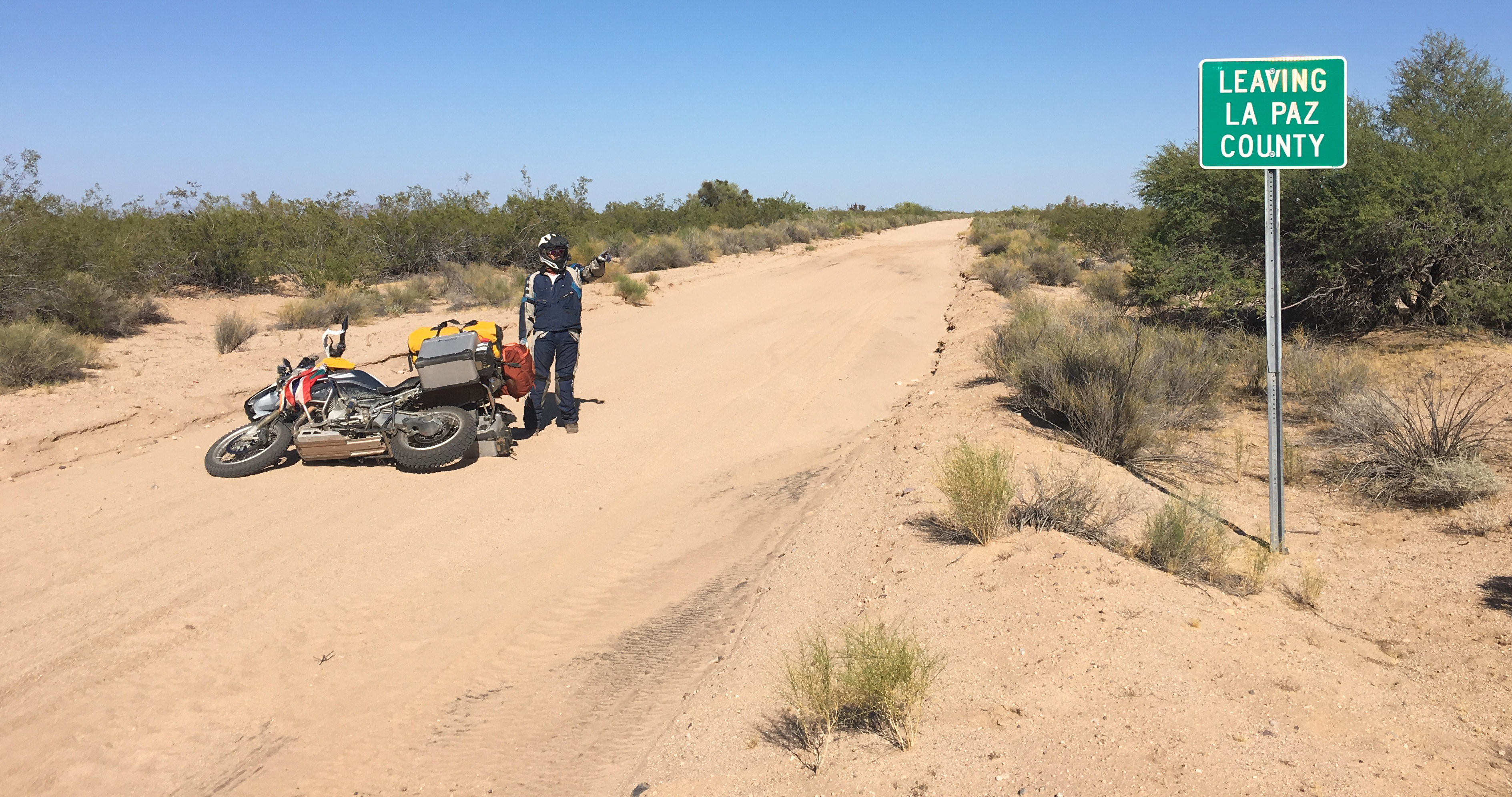
There was a time not too long ago when I looked at riders on massive “adventure” bikes, loaded down with what appeared to be roughly a ton of hard luggage (usually covered in stickers), camping chairs, sleeping bags and enough bolt-on crash protection to mount three sets of auxiliary lights, and I just…didn’t…get it. My idea of riding off-road was more On Any Sunday than Long Way ‘Round.
Then I moved to Colorado, and my new riding buddies all seemed to have dual-purpose bikes; my sportbike and I were getting left behind on Sunday rides. So I went out and bought a Kawasaki KLR650, and the rest is history. Riding adventure bikes opened up a whole new world to me, a world where I could happen upon a dirt road and turn down it to see where it led. That often meant traversing a ridgeline with hundred-mile views, bounding between pine trees and through stream crossings on a forest road or following a winding river at the base of a narrow canyon. Road trips became, well, adventures.
Turns out quite a few riders had figured this out long before I did. It also turns out that there is a rather large community of them, with the accompanying forums, clubs and rallies galore. One such rally, and the largest of its kind in the U.S., is the annual Overland Expo. There are actually two Overland Expos each year; the original has been held at Mormon Lake, near Flagstaff, Arizona, for the past five years, and has become so popular that the organizers decided to start hosting a sister event in the mountains of North Carolina. Both Expos celebrate the adventurous and nomadic lifestyle, via two wheels, four, or more; half the fun of attending is wandering through the displays of EarthRoamers, Sportsmobiles and massive Unimogs.

The other half of the fun, of course, is having an excuse to load up the bike and put together a ride to and from the event, making it as tame or adventurous as you’d like. This year, my boyfriend and I were on a tight schedule, so our route needed to include enough pavement to allow us to make up for the slower speeds we knew we’d encounter in the off-road sections.
The first step was escaping the sprawling Los Angeles metro area, which even on Interstate 10 took a couple of hours. By the time we’d stopped for gas (and a quick photo op at the General George S. Patton Memorial Museum) in Chiriaco Summit, east of Palm Springs, we knew that Prescott, Arizona, would be as far as we’d get that day. We turned off I-10 and onto U.S. Route 60 east of Quartzsite, Arizona, thankful for the more relaxed pace of the two-lane highway. Just east of Aguila we turned north on Arizona State Route 71 to Congress, then made another turn north onto State Route 89.

Up to this point the roads had been relatively straight, good for setting the cruise control and enjoying the desert scenery. Only a few miles up Route 89, however, the road began to climb through a series of sweeping curves as we ascended toward the Prescott area. Settling into the rhythm of perfectly cambered turns and smooth pavement, it was tempting to pick up the pace a bit, but it was getting dark and prudence led us to slow down and watch for wildlife.
The next morning we rolled out early, knowing that we would be tackling some dirt sections as we approached Mormon Lake. First there were more pristine curves as we headed east on State Route 89A, carving through spectacular green mountains to the old ghost town of Jerome, perched on the 30-degree sloped side of Cleopatra Hill 5,066 feet above sea level. The highway narrowed down to barely a two-lane path that snaked in hairpin turns between Jerome’s downtown buildings, past places like the Haunted Hamburger (our lunch stop on the return trip, and well worth it), The Surgeon’s House Bed & Breakfast and the Ghost City Inn. We made a note to return someday to explore further and pressed on toward Sedona, where our route would officially become an adventure.

We faced the same issue as the region’s first settlers almost 140 years ago: Mormon Lake is due east of Sedona but also 3,500 feet above it, deep within the Coconino National Forest. Paved routes would take us either north or south, far out of our way. We needed a shortcut—and fortunately those hardy original settlers built one: Schnebly Hill Road. For 13 miles, this road (which is only traversable by a four-wheel-drive vehicle or a motorcycle with sufficient ground clearance and a skilled pilot) clambers its way up the red rock cliffs east of Sedona to finally emerge at Interstate 17 north of Munds Park. From there, it was a relaxing cruise along a network of forest roads as we made our way to our destination.

Two days later it was time to return home, but we wanted to make sure we varied our route so as not to ride the same roads all over again. There was no avoiding Schnebly Hill Road, but on a fully loaded BMW R 1200 GS the descent was easier than the struggle up, and we were soon retracing our steps south and west on Route 89A. In Prescott we made our first variation; rather than turning onto Route 89, we continued through the intersection onto Pioneer Parkway, then took a left on North Williamson Valley Road. A right on Iron Springs Road (also signed County Road 10) 2.5 miles later carried us on sweeping curves back through Prescott National Forest. Desert communities are few and far between, but they often have great stories. We passed through one such town, Skull Valley, so named because settlers discovered numerous bones there, relics of battles between the Yavapai and Pima Indians.

Not far beyond Skull Valley, Iron Springs Road dead-ends, so we turned right on Kirkland Valley Road/State Route 96 toward the town of Bagdad. The desert here is very much alive: Saguaro and organ pipe cacti, velvet mesquite, bur sage and creosote bush inhabit the rolling hills. We paused for a drink of water at the left turn for State Route 97 and noticed two roadside shrines, or capillitas; in the silence of the desert they inspired reflection.

After turning south on U.S. Route 93 for about 23 miles, we came to our next adventurous detour, a seemingly straightforward dirt road called Alamo Road. Thirty-eight miles and what seemed like a hundred sand washes later, we emerged hot and sweaty onto pavement and made a beeline for U.S. Route 60. A quick stop for gas on I-10 and we were off, heading west toward California and home.
Our trip covered 1,131 miles in total, with about 10 percent off-pavement. Adventure bikes may be tall and heavy, but they open up your riding possibilities. As for those massive Unimogs, though, I just…don’t…get it.

[one-half-first]

[/one-half-first]
[one-half]

[/one-half]













